**** Back On Murder, J. Mark Bertrand, 2010
Note: I started rating books online 20 years ago, before Amazon existed, and developed a 0 to 4 star system. Add a star to get an equivalent Amazon rating.

First off, note another four-star book. Not many of these in a year. You should get this and read it now.
I don't recall where I first ran across Mark - somewhere online about a decade ago when I was in Honolulu and he was in Houston. We exchanged some emails. I read a short story of his and was overwhelmed. At that point I knew I wanted to read anything this guy wrote.
But then life proceded as it does and now, many years later, I'm in Texas and he's in South Dakota and I discover that he's got a contract with Bethany House and a couple of books out in a series. I downloaded the sample on my Kindle, read it, and bought the thing right then. I had the discipline to finish the bedside book I was reading before picking up Back on Murder. As soon as I finished it, I bought the second one immediately. I'll read it when I finish a few other items in the stack.
Here are a few things that stood out for me:
- "I let her take my hand a lead me up the back stairs All is not right in my world, but one small corner is about to get noticeably better."
- "Her gaze has a soft and sightless quality, as if her eyes were the back of a silvered mirror."
- There is this brooding backstory hanging just out of sight for a large portion of the novel. You know there's some point at which this is going to be laid out for you. Two-thirds of the way in, you get the story, but in tight dialog, not in a big information dump. Very deftly handled.
The bottom-line is, if you like well-written police crime fiction, you should read this book. It's not quite Michael Connelly, but it's pretty dang close. Kinda like E. F. Benson vs P. G. Wodehouse. Excellent characters, March, the homocide cop who is the protagonist, the various levels of the police department, the bad guys, all of them, very well drawn. The story has plenty of tendrils, some of which fade out and others which interwine at the end, to keep you guessing.
Connelly was a crime-beat reporter. I don't know that much about Bertrand, personally, but he seems to have a surprisingly intimate knowledge of police culture and processes for a guy with an MFA. Although there was one moment that bugged me. A cop comes to March, saying he'll give him important information in exchange for an immunity deal. They talk for a while, the cop insisting on a signed deal before he'll even mention what his information is about. As I know from my extensive experience in watching cop shows and reading crime novels, you can't get a deal without some sense of what it is you have to offer and a high degree of credibility that you can deliver. So the conversation doesn't feel authentic. Cause I know these things.
This book is published by Bethany House, which is a Christian publisher, but there is no three-points-and-a-poem, come-to-Jesus moment, for which I am grateful because I find them obnoxious and typically avoid Christian fiction for that reason. There are a few notable exceptions based on quality writing and lack of cheese factor. Bertrand is now on that very short list, along with Lisa Samson, Tosca Lee, Athol Dickson, and a few others.
There was only one spot, about a third of the way in, that I felt edged the line, when a cop who is religous gets provoked and says, “What do you believe, March? About God, the universe and everything?” Which is followed by 2 or 3 paragraphs of his response. The exchange felt gratuitous. Less than a page. Minor irritation that quickly passed.
EBOOK FORMATTING **
This is the first Kindle novel that I've reviewed. Having recently suffered through producing Kindle, Nook and iPad versions of the three Fred novels, paying painstaking attention to high-quality production, I'm painfully aware of bad formatting.
For a traditionally published book, the author has no control over production, so this is really a critique of the publisher and their epub production, which may or may not be outsourced.
In my humble but accurate opinion, if publishers want readers to spend $9.99 or more for an ebook, they should produce a superb quality ebook. I hired an experienced epub guy and did over a dozen proofreadings of all three versions of all three books to do everything possible to deliver them with the highest production quality, and with extras you don't get in the print books. And I'm just one guy, not a publisher. And the Fred ebooks are only $2.99. So I have little tolerance for significantly priced ebooks from major publishers, or anyone else, with poor production quality.
NAVIGATION
None. No table of contents, embedded or otherwise. No ability to skip between chapters using the right/left keys. So, if you want to skip back 7 or 8 chapters to check on something, you just have to scroll back one screen at a time, check it, and then scroll forward. Or play "guess the location" with the Go To button.
PARAGRAPHS
There are two ways of doing paragraphs:
- Indent the first line, no blank lines between paragraphs.
- Block style, no indent, a blank line between paragraphs.
This book does both, which wastes limited ereader screen space. Pick one is my motto.
In addition, like many print books, extra line spacing is used to indicate a scene change instead of some kind of graphic element. The problem is that with spacing between paragraphs, which doesn't normally occur in a print book, it's easy to overlook the extra space, which means you enter a new scene without realizing it and get disoriented. Not good to get knocked out of the story like that just from a lack of good formatting. I recommend some kind of graphic indication of scene change for all ebooks. Plus, it just looks nicer and doesn't cost extra to do.
PROOFREADING
I get the impression that proofreading is not as high priority for ebook production as it is for print. In this case, there is a paragraph that is right-justified with ragged left margins somewhere in there. There is also an occurence of a character's name that is hyphenated in the middle of a line, with spaces in the middle of the name, thus: Cav- allo. It's highly unlikely you would see either of these errors in a print book.
NOOK
I downloaded the Nook sample. You get the front matter and a couple of chapters. The paragraph formatting is done right, indents, no linespaces. There is both an embedded and physical table of contents, but the embedded TOC only covers the front matter and the first chapter. The physical TOC covers the whole book, but it doesn't work. Touching the links doesn't take you anywhere.
If I were Bertrand, I'd send Bethany house a copy of this review.
 King really hit it out of the park with this one. Like Michael Connelly, King has the knack of keeping a series alive with a book that is as good or better than the last one every time.
King really hit it out of the park with this one. Like Michael Connelly, King has the knack of keeping a series alive with a book that is as good or better than the last one every time. In The Language of Bees, King accomplished a difficult task - to write a cliff hanger with a satisfying ending. I didn't realize this story was continued in The God of the Hive, and when I got to the end, that didn't bother me at all. The ending felt like an ending. The important points were wrapped up and the loose threads felt like they would take care of themselves.
In The Language of Bees, King accomplished a difficult task - to write a cliff hanger with a satisfying ending. I didn't realize this story was continued in The God of the Hive, and when I got to the end, that didn't bother me at all. The ending felt like an ending. The important points were wrapped up and the loose threads felt like they would take care of themselves. More Mary Russell goodness from Laurie R King, this time set in San Francisco. This time around Mary herself is in trouble and the mystery to solve concerns something that happened when she was six, during the aftermath of the great earthquake of 1906. Something she knows nothing about, but which has placed her life in danger.
More Mary Russell goodness from Laurie R King, this time set in San Francisco. This time around Mary herself is in trouble and the mystery to solve concerns something that happened when she was six, during the aftermath of the great earthquake of 1906. Something she knows nothing about, but which has placed her life in danger. I bought this Kindle book and House of Skin three months ago in response to the
I bought this Kindle book and House of Skin three months ago in response to the  We've reached the end of the year and the end of the extant Hap and Leonard books. As per classic Lansdale, the stakes are upped. I don't want to give away the ending. I'll just say that Hap ends up so far out of his league and doomed for failure that I don't know how any H&L tale after this can be anything except anticlimactic.
We've reached the end of the year and the end of the extant Hap and Leonard books. As per classic Lansdale, the stakes are upped. I don't want to give away the ending. I'll just say that Hap ends up so far out of his league and doomed for failure that I don't know how any H&L tale after this can be anything except anticlimactic.  I found
I found  In an
In an 
 I'm coming down the home stretch on the Hap and Leonard stories. Only one left after this and it just came out, so I don't have it, yet.
I'm coming down the home stretch on the Hap and Leonard stories. Only one left after this and it just came out, so I don't have it, yet. I'm not much one for reading thrillers, even though
I'm not much one for reading thrillers, even though  Justice Hall differs from the first five Mary Russell books in that there is less action and derring-do. In fact, other than an intial off-camera attack, the first bit of violence doesn't occur until halfway through the book.
Justice Hall differs from the first five Mary Russell books in that there is less action and derring-do. In fact, other than an intial off-camera attack, the first bit of violence doesn't occur until halfway through the book.  It's unusual for me to read a book in the year it came out. I'm not much of a bestseller follower, and until recently I haven't really been following any contemporary series. Plus, my to-be-read shelf is long enough for me to wait for the paperback of any series of a living author I might be reading.
It's unusual for me to read a book in the year it came out. I'm not much of a bestseller follower, and until recently I haven't really been following any contemporary series. Plus, my to-be-read shelf is long enough for me to wait for the paperback of any series of a living author I might be reading. I have the Hap and Leonard series on the
I have the Hap and Leonard series on the  Amazon has a thing called the
Amazon has a thing called the  I lost a lot of hours of sleep over this book, but the Mary Russell series has that effect on me. Just can't put it down. But one must do the day job occasionally, so it's not possible to read it straight through.
I lost a lot of hours of sleep over this book, but the Mary Russell series has that effect on me. Just can't put it down. But one must do the day job occasionally, so it's not possible to read it straight through.  Five books in and it's still a non-stop, insane, balls-to-the-wall thrill ride, combined with masterful writing.
Five books in and it's still a non-stop, insane, balls-to-the-wall thrill ride, combined with masterful writing. It's a return to Dartmoor for Holmes as the specter of the dreaded hound emerges again from the moor. One thing that attracts me to King's Mary Russell series, beyond the primary element of excellent writing, is the tie-in to elements from the canon, such as Baskerville Hall in this case. I also greatly enjoy references to or use of contemporaneous fictional and historical characters.
It's a return to Dartmoor for Holmes as the specter of the dreaded hound emerges again from the moor. One thing that attracts me to King's Mary Russell series, beyond the primary element of excellent writing, is the tie-in to elements from the canon, such as Baskerville Hall in this case. I also greatly enjoy references to or use of contemporaneous fictional and historical characters. Disclaimer:
Disclaimer:  Still rocking along in the Mary Russel series and still loving it. I wondered how the change in Mary's circumstances would change the atmosphere of the series. The answer is that it did nothing to hurt it, but in fact probably improved it. Can't be any more specific that that without spoilers.
Still rocking along in the Mary Russel series and still loving it. I wondered how the change in Mary's circumstances would change the atmosphere of the series. The answer is that it did nothing to hurt it, but in fact probably improved it. Can't be any more specific that that without spoilers. I skimmed through the second Hap and Leonard novel,
I skimmed through the second Hap and Leonard novel,  This should really be 3 and a half stars, but I can't do half an asterisk. I did skim through
This should really be 3 and a half stars, but I can't do half an asterisk. I did skim through  We're back on Lansdale, forging through the Hap and Leonard series. I read
We're back on Lansdale, forging through the Hap and Leonard series. I read  This was a
This was a 
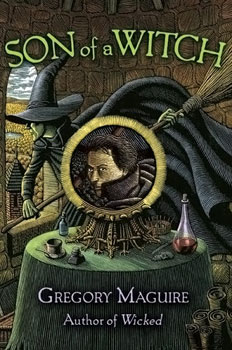 I'm on a roll, reading lots of good books by good writers with a flare for imagery, a turn of phrase, and metaphor. It's been a while since I read Wicked, but I thought it was great, so when I saw the sequel at Half-Price books, I snagged it.
I'm on a roll, reading lots of good books by good writers with a flare for imagery, a turn of phrase, and metaphor. It's been a while since I read Wicked, but I thought it was great, so when I saw the sequel at Half-Price books, I snagged it.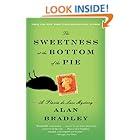 Finally, after many months, we get a four-star book! The best description of this book is to imagine an 11-year-old Miss Marple. That pretty much says it all, and for those who like that sort of thing will love this.
Finally, after many months, we get a four-star book! The best description of this book is to imagine an 11-year-old Miss Marple. That pretty much says it all, and for those who like that sort of thing will love this. The novel has been sitting on my shelf for some time like a fine wine as I was reluctant to precipitately imbibe the only extant Lisa Samson novel I haven't read and be left bereft. But I finally cracked it open and drank.
The novel has been sitting on my shelf for some time like a fine wine as I was reluctant to precipitately imbibe the only extant Lisa Samson novel I haven't read and be left bereft. But I finally cracked it open and drank. Rick is on a roll. (Sorry, I couldn't resist it.) It amazes me that Riordan can do the formula for five Percy Jackson books and now two Kane books and still make it interesting.
Rick is on a roll. (Sorry, I couldn't resist it.) It amazes me that Riordan can do the formula for five Percy Jackson books and now two Kane books and still make it interesting. One advantage of getting a Kindle is you end up reading all the classics you've been putting off reading because you can get them for free. One downside of this practice is that the free versions tend to have poor formating. But hey, it's free.
One advantage of getting a Kindle is you end up reading all the classics you've been putting off reading because you can get them for free. One downside of this practice is that the free versions tend to have poor formating. But hey, it's free. My Tue-Sat morning routine is to grab the iPad and watch the previous nights Late Late Show while I make and eat breakfast. In my humble but accurate opinion, he's the only late night talk show guy worth watching.
My Tue-Sat morning routine is to grab the iPad and watch the previous nights Late Late Show while I make and eat breakfast. In my humble but accurate opinion, he's the only late night talk show guy worth watching. Could it be that I'm over Buckley? I have found the last two clever, but no longer engaging. Erudite, sophisticated, but no heart. Well, one must eat the chicken and spit out the bones. I'll keep sampling and see if things change.
Could it be that I'm over Buckley? I have found the last two clever, but no longer engaging. Erudite, sophisticated, but no heart. Well, one must eat the chicken and spit out the bones. I'll keep sampling and see if things change.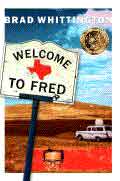
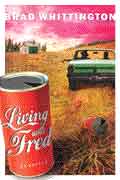

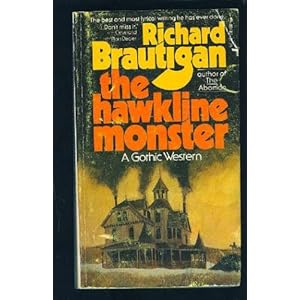

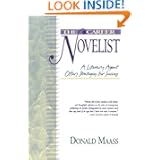 There are two things wrong with this book, and they both have to do with the date at the end of the above line.
There are two things wrong with this book, and they both have to do with the date at the end of the above line.  I couldn't finish it. This doesn't happen very often. Honest. And I'm a huge fan of Ms. King's Mary Russell series. I read
I couldn't finish it. This doesn't happen very often. Honest. And I'm a huge fan of Ms. King's Mary Russell series. I read  So, a few months later I decided to give the Casey Martinelli series one more go, this time starting at the beginning with A Grave Talent. This moved at a much more satisfactory pace, but I didn't find myself itching to get back to it. In fact, I found myself doing other things to avoid reading it. When at page 140 out of 340 I thought I had figured out the big reveal, I skipped to the back and read a chapter or so to confirm it. I was half right. I'd figured out who the murderer was, just not who he was posing as. So, I figured no need to keep reading Martinelli. I'll stick with the Mary Russell series. Of course, YMMV.
So, a few months later I decided to give the Casey Martinelli series one more go, this time starting at the beginning with A Grave Talent. This moved at a much more satisfactory pace, but I didn't find myself itching to get back to it. In fact, I found myself doing other things to avoid reading it. When at page 140 out of 340 I thought I had figured out the big reveal, I skipped to the back and read a chapter or so to confirm it. I was half right. I'd figured out who the murderer was, just not who he was posing as. So, I figured no need to keep reading Martinelli. I'll stick with the Mary Russell series. Of course, YMMV. I'm only four books into his large body of work, but one thing is clear about Joe R. Lansdale. He's a brilliant writer. Vivid images, trenchant metaphors, visceral writing, penetrating characters, outrageous circumstances, sardonic humor.
I'm only four books into his large body of work, but one thing is clear about Joe R. Lansdale. He's a brilliant writer. Vivid images, trenchant metaphors, visceral writing, penetrating characters, outrageous circumstances, sardonic humor. The other Lansdale novels I've read have been a little wacky. This one was serious, a coming of age story, and very nicely done. Set in the late 50s in a small East Texas town. Lansdale has a way with a phrase, although this book as not as chockfull of the
The other Lansdale novels I've read have been a little wacky. This one was serious, a coming of age story, and very nicely done. Set in the late 50s in a small East Texas town. Lansdale has a way with a phrase, although this book as not as chockfull of the  Another book loaned by The Learned One. Good writing, good story, good ending, although I suspected the ending early, saw it coming for sure on page 225 out of 400 pages. The only question left about the ending at that point was not "what happens" but "how does it happen."
Another book loaned by The Learned One. Good writing, good story, good ending, although I suspected the ending early, saw it coming for sure on page 225 out of 400 pages. The only question left about the ending at that point was not "what happens" but "how does it happen." Mike Mason does not disappoint, particularly with his non-fiction. There are moments when he recounted experiences raising his daughter that I thought, "Come on, Mike, who is in charge, here?" But for the most part he delivers the zingers for which one reads Mike Mason. One need not have children to benefit from this book.
Mike Mason does not disappoint, particularly with his non-fiction. There are moments when he recounted experiences raising his daughter that I thought, "Come on, Mike, who is in charge, here?" But for the most part he delivers the zingers for which one reads Mike Mason. One need not have children to benefit from this book. My Buckley source told me that Little Green Men was the best. I finally picked up a copy and found that I must respectfully disagree. Like other Buckley novels, it is zany and erudite, but I felt like I never got below the surface on any of the characters, not even the protagonist. A lot of the character reactions seemed contrived or obvious, as if Buckley was taking the easy way out, almost phoning it in.
My Buckley source told me that Little Green Men was the best. I finally picked up a copy and found that I must respectfully disagree. Like other Buckley novels, it is zany and erudite, but I felt like I never got below the surface on any of the characters, not even the protagonist. A lot of the character reactions seemed contrived or obvious, as if Buckley was taking the easy way out, almost phoning it in. Last year, after a three-year sojourn in the wilderness of screenwriting, I returned to my homeland, the novel. I've got three works in progress and plan to release the first one, Muffin Man, in early 2012. So, for all you Fred Book fans out there who have been wanting something new from the Whittington pen, your day is coming.
Last year, after a three-year sojourn in the wilderness of screenwriting, I returned to my homeland, the novel. I've got three works in progress and plan to release the first one, Muffin Man, in early 2012. So, for all you Fred Book fans out there who have been wanting something new from the Whittington pen, your day is coming. The All-New Real Estate Foreclosure Short-Selling Underwater Property Auction Positive Cash Flow Book, Chantal Howell Carey and Bill Carey, 2009
The All-New Real Estate Foreclosure Short-Selling Underwater Property Auction Positive Cash Flow Book, Chantal Howell Carey and Bill Carey, 2009 Buying Real Estate Foreclosures, Melissa S. Kollen-Rice, 2003
Buying Real Estate Foreclosures, Melissa S. Kollen-Rice, 2003 How to Buy Foreclosed Real Estate for a Fraction of its Value, Theodore J. Dallow, Don Ayer and Dick Pas, 2008
How to Buy Foreclosed Real Estate for a Fraction of its Value, Theodore J. Dallow, Don Ayer and Dick Pas, 2008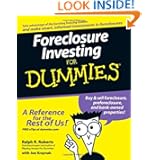 Foreclosure Investing for Dummies, Ralph R. Roberts with Joe Kraynak, 2007
Foreclosure Investing for Dummies, Ralph R. Roberts with Joe Kraynak, 2007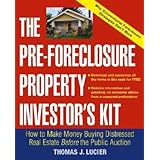 The Pre-Foreclosure Property Investor's Kit, Thomas J Lucier, 2005
The Pre-Foreclosure Property Investor's Kit, Thomas J Lucier, 2005